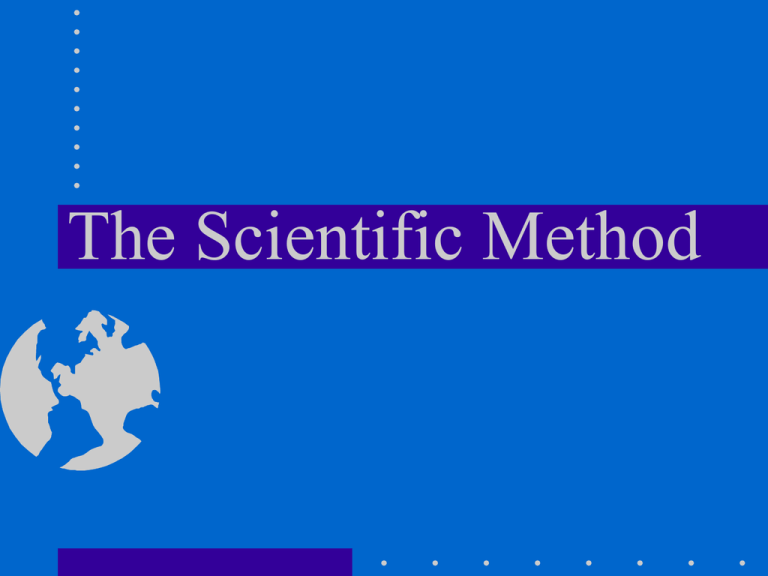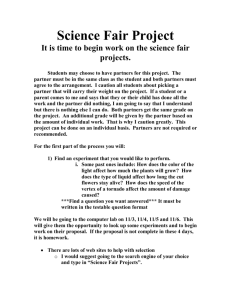Notes_SciMethod
advertisement

The Scientific Method Steps to the Scientific Method (PRHEAD) • Problem State the problem • Research • Hypothesis form a hypothesis • Experiment design & conduct experiment • Analyze Collected Data • Draw Conclusion support or reject hypothesis P-Problem State the Problem • Gives you a reason for doing the experiment • This question MUST be testable/measurable • Ex: Which car oil will allow my car to get the best gas mileage? Process It…Testable or Not? Do cats make better pets than dogs? Process It…Testable or Not? How do different types of movement/activity affect human heart rate? Process It…Which is testable? A. Which is the tastiest soda? B. How many people will choose Dr. Pepper over Coke? R-Research • In order to make an educated guess (hypothesis), you need to find out more information about the problem you are trying to solve. • Ex: research various oils and their properties. H-Hypothesis form a hypothesis • A hypothesis is an educated guess about the solution to your problem based on your research. • This is done with an “if / then” statement. . • Ex: If I use Havoline car oil then my Lamborghini Diablo will get better gas mileage. Hypothesis MUST be: 1. Testable/ Fact-based-“Dr. Pepper is the tastiest soda” is not fact-based, it’s based on opinion, and therefore can not be a hypothesis. 2. A sentence, not a question!! Process It…Testable or Not? If I use Havoline car oil then it will be better than Mobile Oil. Process It…Testable or Not? •If I use Havoline car oil then my Lamborghini Diablo will get better gas mileage. E-Experiment Design and conduct experiment • This is done to test the hypothesis. • Design an experiment that will provide data to support or reject your hypothesis. – Ex: Test four different car oils found during research Parts of an Experiment • Independent Variable – The part of an experiment that you change. • EX: car oil • Dependent Variable- What you are recording/observing. It changes according to how the independent variable changes • Ex: gas mileage – ONLY test one variable at a time!!!!!!!!!! Parts of an Experiment • Constant variables- quantities that remain constant (the same) aka “controlled variables” • Ex: same car, same road • Control group- what is used to COMPARE the results to. It is the variable in which no independent variable has been applied. • Ex: test run with the original brand of oil in the car A-Analyze Collected Data • Observations are recorded facts about what you see during the experiment. –Graph: IV’s go on the x-axis DV’s go on y-axis D-Draw Conclusion Support or reject hypothesis • This is a brief statement about the results of the experiment. • In the conclusion state if the hypothesis was correct (supported) or incorrect (rejected). • Claim, evidence, reasoning •TYPES OF DATA Observation or Inference Observation- See with own eyes (ex; the apple is red, it is raining outside, the window is 6ft long Inference: What you think might be true but not sure. (ex: She is wiping her eyes, she is crying, He has hair on his shirt, he owns a cat) Types of Observations • Qualitative – Results are descriptive. –ex: the litmus paper turned red • Quantitative – Results are numerical and have a unit. –ex: 5 meters, 45 seconds Accuracy vs Precision • Accuracy- nearness to the actual value • Precision- how close the data is together Accuracy and precision: the target example Precise, but not accurate Accuracy and precision: the target example Accurate, not precise Accuracy and precision: the target example Neither accurate, nor precise Accuracy and precision: the target example Accurate and precise








